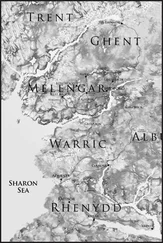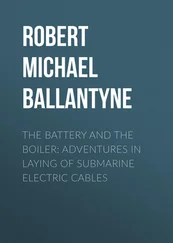Michael Neufeld - The Rocket and the Reich
Здесь есть возможность читать онлайн «Michael Neufeld - The Rocket and the Reich» весь текст электронной книги совершенно бесплатно (целиком полную версию без сокращений). В некоторых случаях можно слушать аудио, скачать через торрент в формате fb2 и присутствует краткое содержание. Город: Washington, Год выпуска: 2013, ISBN: 2013, Издательство: Smithsonian Books, Жанр: История, military_weapon, на английском языке. Описание произведения, (предисловие) а так же отзывы посетителей доступны на портале библиотеки ЛибКат.
- Название:The Rocket and the Reich
- Автор:
- Издательство:Smithsonian Books
- Жанр:
- Год:2013
- Город:Washington
- ISBN:978-1-58834-466-3
- Рейтинг книги:3 / 5. Голосов: 1
-
Избранное:Добавить в избранное
- Отзывы:
-
Ваша оценка:
- 60
- 1
- 2
- 3
- 4
- 5
The Rocket and the Reich: краткое содержание, описание и аннотация
Предлагаем к чтению аннотацию, описание, краткое содержание или предисловие (зависит от того, что написал сам автор книги «The Rocket and the Reich»). Если вы не нашли необходимую информацию о книге — напишите в комментариях, мы постараемся отыскать её.
The Rocket and the Reich — читать онлайн бесплатно полную книгу (весь текст) целиком
Ниже представлен текст книги, разбитый по страницам. Система сохранения места последней прочитанной страницы, позволяет с удобством читать онлайн бесплатно книгу «The Rocket and the Reich», без необходимости каждый раз заново искать на чём Вы остановились. Поставьте закладку, и сможете в любой момент перейти на страницу, на которой закончили чтение.
Интервал:
Закладка:
Nebel’s timing could not have been worse. The tension between the Army and the SA had reached a crisis point, and the generals were pressing Hitler for action. Hermann Göring and the chief of the still small SS, Heinrich Himmler, exploited the situation for their own ends by feeding Hitler false rumors of a planned coup by the SA. Beginning on June 30, 1934, the “Night of the Long Knives,” SS execution squads shot much of the SA leadership in Munich and elsewhere, including Röhm and von Krausser. Army units provided logistic and backup support. In Berlin, Nebel was arrested and imprisoned at SS/Gestapo headquarters downtown. By his own account he was saved from a potentially worse fate when he was recognized by a police official who had been a frequent visitor at Raketenflugplatz. It was typical of Nebel that in short order he got better treatment and then was let out of jail. He returned to the old rocket site to find his materials and car confiscated on orders from Army Ordnance. Under the terms of the lease, he was told to vacate once and for all. Presumably he had not been evicted earlier because of his connection with Seldte. 58
Nebel, astoundingly, did not give up. Already in the fall of 1934 he tried to make some kind of arrangement with the large engineering firm Rheinmetall-Borsig. He would come back to haunt the rocket program a few more times, and the people in Ordnance would just as determinedly frustrate him at every turn. He was not alone in trying. Rolf Engel, another bitter opponent of the Army, led a student group that built a test stand for amateur experiments at Siemensstadt in northern Berlin around the end of 1934. But that group disappeared within a few months. 59
Since the SA purge had effectively given the Army a rocket monopoly, Ordnance now had the power to eliminate even minor irritants. When a young spaceflight enthusiast named Werner Brügel wanted to give a radio talk on rockets for stratospheric exploration, Section 1 moved to stop all radio discussions of the topic and gave the naïve Brügel a tongue-lashing in their offices. Reflecting the prevailing anti-Semitism, Schneider’s record of the August 1934 meeting states that Brügel had “an unpleasantly Jewish way of speaking.” The Gestapo showed up at Brügel’s residence in Frankfurt shortly thereafter, arrested him temporarily, and confiscated his material. 60
A different side of the Army’s drive for a rocket monopoly was experienced by Arthur Rudolph, who had worked on the Valier–Heylandt engines in 1930–31. He had lost his job in mid-1932 because of the Depression, and then met his old boss, Alfons Pietsch, in the unemployment office. They wanted to start in rocketry again, so they tried going to the local SA leader in Berlin for help. Rudolph had joined the National Socialist party and the SA Reserve in mid-1931, supposedly for anti-Communist reasons, and would become the longest-serving Nazi of all the prominent engineers at Peenemünde. The SA turned Rudolph and Pietsch down in 1932, but in May 1933 they obtained a small contract from Army Ordnance to work in secret on their engine. Pietsch disappeared with much of the money, and Rudolph had to finish the job himself. When he showed up to demonstrate the engine at Kummersdorf in August 1934, Dornberger told him: “You either work for us, or you don’t work at all.” As part of the conditions for his hiring, Rudolph had to leave the SA, but not the Party. 61
At least one other obscure group in Hannover survived the Army’s campaign, only to be eliminated in 1936, and a minor plague of rocket “inventors” appeared between 1934 and 1937 to waste the time of the officers and engineers in Ordnance. Most turned out to be fraudulent or incompetent. One of the more credible was Hermann Oberth, who resurfaced in the summer of 1934 with a missile proposal sent in from Rumania. Because of his foreign citizenship and difficult personality, he was excluded from any participation in the program until 1941. The suppression of the rocket groups and the exclusion of unwanted personalities both contributed to Ordnance’s single-minded aim in 1933–34: to use the mechanisms of the Army and the Nazi police state to concentrate development in its own team at Kummersdorf and to eliminate all possible threats to secrecy. But while all this activity was going on, under von Braun’s leadership important strides were being made toward the establishment of liquid-fuel rocketry as a viable technology. 62
FROM A-1 TO A-2
When von Braun began working on his dissertation at Kummersdorf in late 1932, even the modest program of mid-1934 would have seemed luxurious. The resources he had to work with were minimal:
One-half of a concrete pit with a sliding roof was at my disposal, the other half being occupied with powder rockets. Also, one mechanic was assigned to me. 1 was instructed to give my work orders to an artillery workshop, which turned out to be loaded to capacity with other tasks, mostly of a higher priority than mine. The mechanics as to how my purchase orders were processed through the cumbersome administrative machinery remained for a long time an opaque mystery to me. It was a tough start. 63
The “one mechanic” was an old hand from Raketenflugplatz, the skilled metalworker Heinrich Grünow. He was a help, but von Braun lacked the extensive engineering knowledge that might have made the practical job of constructing rocket engines easier.
While von Braun was grappling with those problems at Kummersdorf, the parallel Heylandt program continued. The clear intent of the autumn 1932 contract for a 20-kg-thrust engine had been to produce a laboratory instrument, since its thrust was only one-eighth of that of the 1931 Heylandt rocket-car. The small engine’s weight in comparison to its thrust was such that the ballistics and munitions section had to fend off a serious challenge from an unnamed leader of Ordnance. He declared liquid-fuel rocket technology worthless, because obviously this engine could never lift itself off the ground! 64
Although it was clear that engines of higher performance characteristics could be built by Heylandt, Ordnance did not energetically pursue that option, presumably because of the Kummersdorf work. Von Horstig inquired about a 200-kg-thrust engine in December 1932, but six months later Ordnance submitted an order only for a 60-kg engine that Heylandt had proposed. The primary motivation appears to have been to prevent the layoff of Heylandt’s rocket group. That engine was successfully tested on company grounds in September 1933. When the company offered in November to build an engine with up to 400 kg of thrust, however, Section 1 turned it down, and told Heylandt to expect no further contracts. 65
Satisfied that the technology developed at Kummersdorf was superior, Ordnance further consolidated liquid-fuel rocket development in January 1934 by hiring Walter Riedel, the key engineer in Heylandt’s group. Riedel, ten years older than the precocious doctoral student, provided the practical design experience von Braun lacked, plus the experience of having worked on rocket engines ever since Valier’s original liquid-fuel experiments. It is indicative of how young the rocket group would be that he became known as “Papa” Riedel. As chief of the design office at Peenemünde when it opened in 1937, he was all of thirty-five years old. 66
Notwithstanding the Heylandt work and the small spinoff contract to Pietsch and Rudolph, the main line of development had always been von Braun’s. Starting from Raketenflugplatz designs, he built the alcohol/liquid-oxygen “1W” series (W for water-cooled), with a thrust of about 130 kg. Dornberger’s memoirs give a picturesque description of the explosion that supposedly destroyed much of the test stand at the first test on December 21, 1932. That recollection is inconsistent with von Braun’s own memory of the first test being a success in January 1933. In any case, explosions, leaks, and burnthroughs did follow. The redesign process was tedious and largely empirical, involving endless variants. Eventually von Braun was able to go to regenerative cooling with the “1B” series (B for Brennstoff or fuel) and then the “2B” series with 300 kg of thrust in the autumn of 1933 or thereabouts. 67
Читать дальшеИнтервал:
Закладка:
Похожие книги на «The Rocket and the Reich»
Представляем Вашему вниманию похожие книги на «The Rocket and the Reich» списком для выбора. Мы отобрали схожую по названию и смыслу литературу в надежде предоставить читателям больше вариантов отыскать новые, интересные, ещё непрочитанные произведения.
Обсуждение, отзывы о книге «The Rocket and the Reich» и просто собственные мнения читателей. Оставьте ваши комментарии, напишите, что Вы думаете о произведении, его смысле или главных героях. Укажите что конкретно понравилось, а что нет, и почему Вы так считаете.












